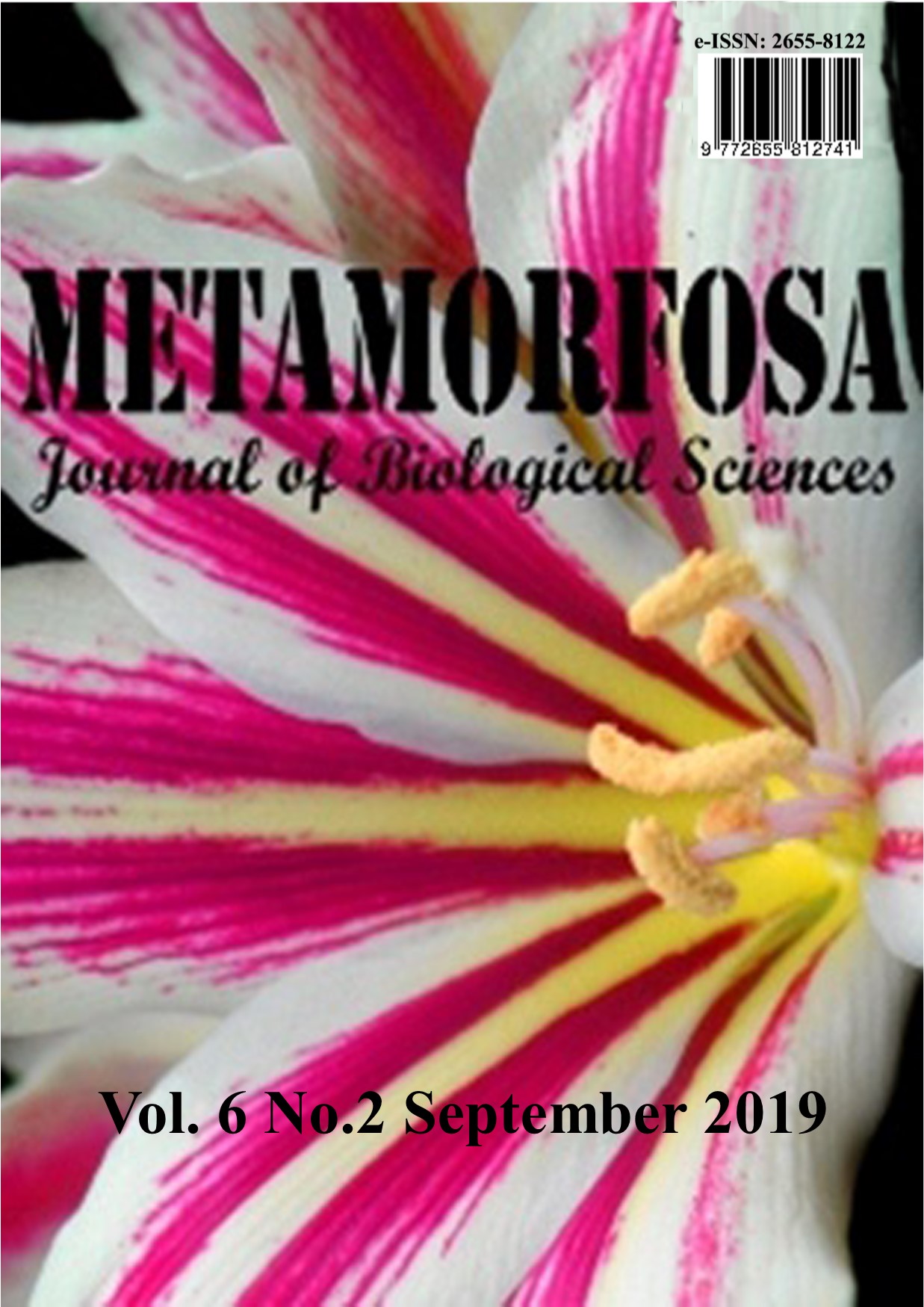Biological Aspects And Family Relationship Of Local Rice (Oryza sativa L. ) In Wongaya Gede Village, Penebel, Tabanan Regency, Bali
Abstract
The aim of this research was to determine morphological characteristics, number of local rice varieties, family relationship and type of pests and weeds that disrupt the life cycle of local rice varieties in Wongaya Gede Village, Penebel, Tabanan Regency, Bali. Research was conducted in three Subak (Piak, Keloncing and Bedugul) located in Wongaya Gede Village; and Plant Structure and Development Laboratory, Department of Biology, Faculty of Mathematics and Natural Sciences, Udayana University, August 2015 - January 2016. Field observation include morphological characteristics from seedlings to harvest phase (85 characters), identification of pests and weeds as well as environmental factors that affect local rice growth. Pollen viability was examined using 1% aniline blue in laktofenol. Result of the study revealed that local rice characteristics in Wongaya Gede Village can be observed based on morphological stems, leaves, inflorescentia, grain, rice, agronomic and anatomical, shape type and pollen viability and endosperm types. Six varieties of local rice in Wongaya Gede Village are Merah Cendana, Injin, Putih Cempaka, Ketan Beton, Ketan Tahun, Jaka Selem and one varieties of ‘unggul’ rice is Mansur. Fenogram shows local rice varieties were divided into two groups, namely Indica (Mansur and Ketan Beton) and Javanica (Merah Cendana, Injin, Putih Cempaka, Ketan Tahun and Jaka Selem). Weeds that disrupt the life cycle of local rice in Wongaya Gede Village can be divided into two groups; sedges and broad leaves. Pests observed were Mamalia (mammals), Aves (birds) and Insecta (insects).
Keyword: Fenogram, Local knowledge, Morphological relationship, Pollen, Subak





